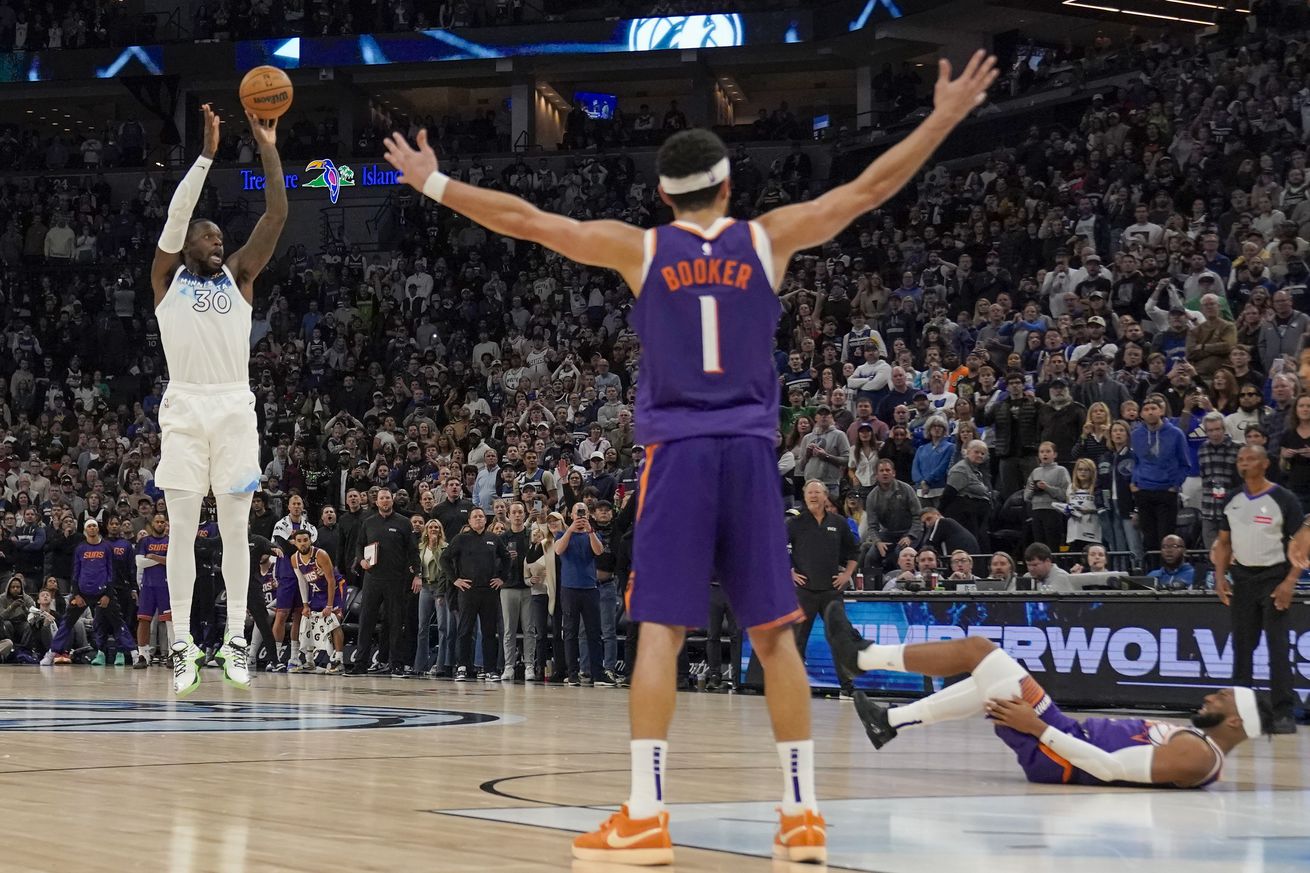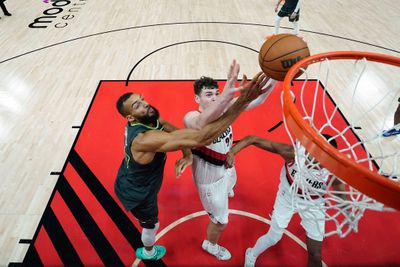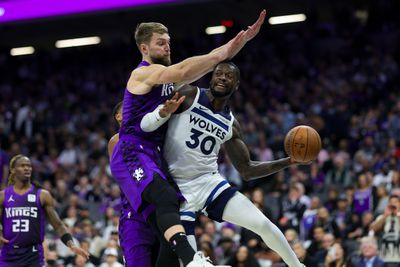
The clutch time stats from this team so far are hilarious, and they don’t point to an immediate end to the crunch time nervousness – and success.
Out of the 14 games played thus far in the Minnesota Timberwolves’ season, how many have you found your palms to be unnecessarily sweaty late fourth quarter, or perhaps maybe thoughts of putting your remote through your TV?
For reasons on or off the floor, the Wolves have never been a boring team. Credit where it’s due.
With a couple new higher-usage pieces in the lineup this season in Julius Randle and Donte DiVincenzo, there have been exceedingly high highs and head-scratching lows.
Julius Randle’s buzzer-beating, game-winning 3…
As heard on @Timberwovles Radio Network. pic.twitter.com/ywRyVBkOnl
— Alan Horton (@WolvesRadio) November 18, 2024
A lot of which has come in clutch time. Out of the Wolves 14 games so far this season, eight of them have gone into clutch time. Last season, the Wolves went to clutch time six times in their first 14.
It’s been an area of the game where things have notoriously gone wrong over the last few years. They’ve been skittish in closing teams out, let subpar teams hang around, and have looked overall disheveled at times executing down the stretch.
Reviews have been pretty mixed so far this year both in clutch time and the path to getting there, but game-winner or not, a couple of things have emerged down the stretch that could perhaps point towards the heart rate increase being a bit more of a regularity with this team.
Note: Clutch time is the final five minutes of the fourth quarter or overtime in which the score is within 5 points

Soobum Im-Imagn Images
The Battle to End Possessions
Ending possessions on the offensive end in clutch time has come relatively easy for the Wolves early on in the season. With an offensive rating of 131.6, they’re fourth in the league. They’re also fourth in clutch time with a true shooting percentage of 69 percent.
Part of that is the byproduct of Julius Randle being a better closer than Karl-Anthony Towns. Towns got off to quick starts and was often more passive towards the end of games, letting Anthony Edwards grab ahold of the offense down the stretch. He attempted fewer field goals in clutch time and shot 38 percent from the field and 29 percent from three.
Randle on the other hand isn’t as afraid of punishing a smaller guy down low or passing out of a situation to free up an open three.
“When I was with him in New Orleans, one of the things I thought [Julius] could do was close games real well, because he could get to his spots, draw fouls, he makes tough shots and he’s a good passer,” Chris Finch said of his recent end-of-game hero.
Or, you know, he’s not really afraid of taking a step back on his own accord.
brody shoot with the left hand, Julius Randle pic.twitter.com/tcKjMvlc0G
— Minnesota Timberwolves (@Timberwolves) November 18, 2024
The flip side of this is the deficiencies that have plagued the Wolves in rebounding the basketball and ending possessions on that end of the floor.
The Timberwolves are 19th in the league in defensive rebounds per game in the clutch, and 26th in defensive rebound percentage. Whether in the clutch or not, this reared its head multiple times on Sunday, which resulted in a trading of baskets, as opposed to possibly grabbing hold of the game and going on a run.
EDITOR’S NOTE: Video content is not viewable on Apple News and some other aggregated platforms, but visible on the website here.
It might be helpful to note that the Monte Morris floater in the previous video game after another Phoenix Suns offensive rebound.
Another came at roughly a two-and-a-half-minute scoring drought at the beginning of the fourth quarter when nothing seemed to be falling, and the door was open for the Wolves to pull in front, but coughed it up for a backbreaking three.
Just a couple of the more egregious anecdotal examples that happened just outside of clutch time on Sunday. But similar instances happened in Portland at the hands of Donovan Clingan and a high-flying Shaedon Sharpe.
In order to close out games, closing out the other teams’ possessions has to fall in line more consistently. As we sit at this current point, the road map forward seems to be more shaky with some of the size that’s given up on the second unit and the inconsistency in rebounding from the guard spot.

Sergio Estrada-Imagn Images
Turnover Prone
The Wolves may struggle to end possessions, but a recurring theme throughout many full games, but also reflected in the clutch is the tendency to give possessions away as well.
The math is pretty simple – perhaps not ending possessions incredibly well and also giving them away isn’t a recipe for consistency and for fans to be able to kick their chairs back in the fourth quarter.
As the timeline has noted all season, turnovers are another significant issue. Wolves are currently 27th in Turnover % at 17.0%. There’s a lot of careless passing showing up each night. pic.twitter.com/2lIqkcphbn
— John Meyer (@meyerNBA) November 14, 2024
A few stats:
- Overall turnovers per game: 16.2 (24th (6th worst))
- Clutch time turnover percentage: 14% (24th)
- Clutch time assist to turnover ratio: 1.13 (22nd)
- Clutch time net rating: +11.6 (10th) (perhaps helped by a closing 13-3 run by the Wolves against Phoenix)
Despite things getting sloppy, they’ve still found a way to net positive and come away with wins down the stretch. Part of that is head scratching; how does such an unserious team when it comes to the eye test at times still find a way to make this happen?
Perhaps it doubles as a positive. They’re still able to win close basketball games in November with a new rotation, and at this point, it’s hard to ask for too much more than that. What happens if, even rebounding issues persist but turnovers are able to be cleaned up? Does it snap the spell of gut-wrenching second halves? Fourth quarters? Does it look more methodical and measured?
Perhaps, but It’s hard to say that both issues are going to end up getting resolved with this team, especially when it comes to rebounding with more undersized bigs and wings that have yet to prove their stock consistently in that aspect of the game.
Will we get a better idea of just how clean this team is able to finish games? Sure, but I wouldn’t be surprised if that better idea results in living with the ups and downs that come with it.